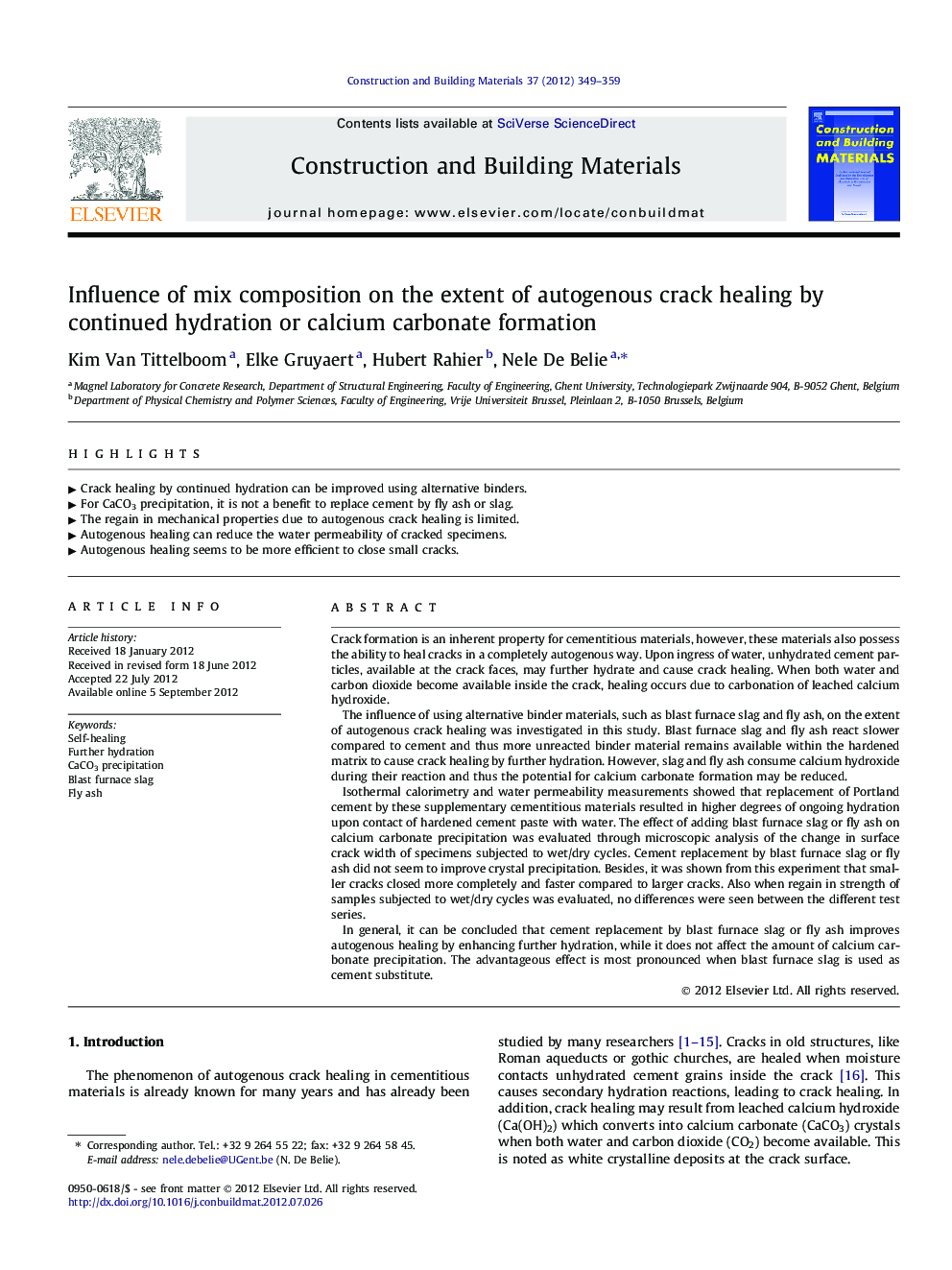| کد مقاله | کد نشریه | سال انتشار | مقاله انگلیسی | نسخه تمام متن |
|---|---|---|---|---|
| 258730 | 503622 | 2012 | 11 صفحه PDF | دانلود رایگان |

Crack formation is an inherent property for cementitious materials, however, these materials also possess the ability to heal cracks in a completely autogenous way. Upon ingress of water, unhydrated cement particles, available at the crack faces, may further hydrate and cause crack healing. When both water and carbon dioxide become available inside the crack, healing occurs due to carbonation of leached calcium hydroxide.The influence of using alternative binder materials, such as blast furnace slag and fly ash, on the extent of autogenous crack healing was investigated in this study. Blast furnace slag and fly ash react slower compared to cement and thus more unreacted binder material remains available within the hardened matrix to cause crack healing by further hydration. However, slag and fly ash consume calcium hydroxide during their reaction and thus the potential for calcium carbonate formation may be reduced.Isothermal calorimetry and water permeability measurements showed that replacement of Portland cement by these supplementary cementitious materials resulted in higher degrees of ongoing hydration upon contact of hardened cement paste with water. The effect of adding blast furnace slag or fly ash on calcium carbonate precipitation was evaluated through microscopic analysis of the change in surface crack width of specimens subjected to wet/dry cycles. Cement replacement by blast furnace slag or fly ash did not seem to improve crystal precipitation. Besides, it was shown from this experiment that smaller cracks closed more completely and faster compared to larger cracks. Also when regain in strength of samples subjected to wet/dry cycles was evaluated, no differences were seen between the different test series.In general, it can be concluded that cement replacement by blast furnace slag or fly ash improves autogenous healing by enhancing further hydration, while it does not affect the amount of calcium carbonate precipitation. The advantageous effect is most pronounced when blast furnace slag is used as cement substitute.
► Crack healing by continued hydration can be improved using alternative binders.
► For CaCO3 precipitation, it is not a benefit to replace cement by fly ash or slag.
► The regain in mechanical properties due to autogenous crack healing is limited.
► Autogenous healing can reduce the water permeability of cracked specimens.
► Autogenous healing seems to be more efficient to close small cracks.
Journal: Construction and Building Materials - Volume 37, December 2012, Pages 349–359